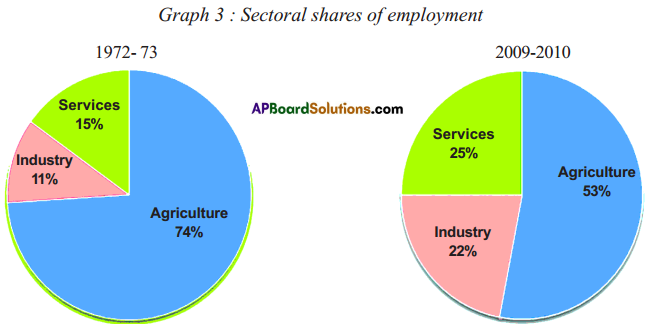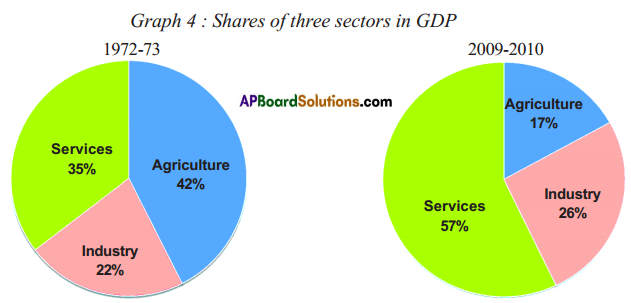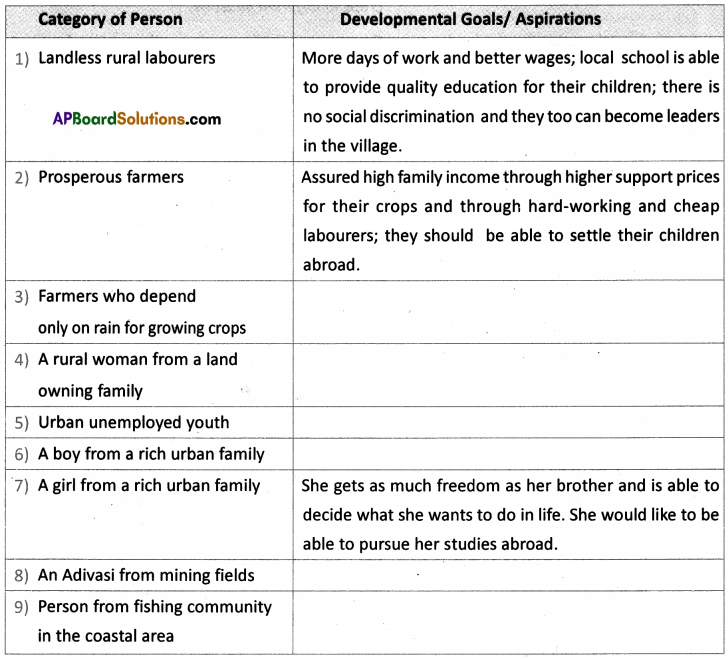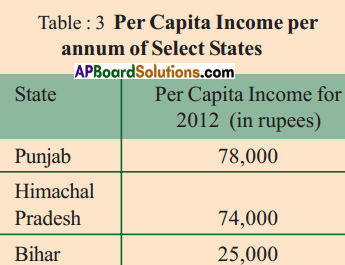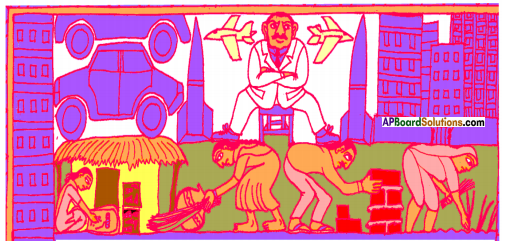SCERT AP Board 10th Class Social Solutions 13th Lesson The World Between Wars 1900-1950 Part 1 Textbook Questions and Answers.
AP State Syllabus SSC 10th Class Social Studies Solutions 13th Lesson The World Between Wars 1900-1950 Part 1
10th Class Social Studies 13th Lesson The World Between Wars 1900-1950 Part 1 Textbook Questions and Answers
Improve your learning
Question 1.
Correct the false statements,
(a) At the beginning of 20th century disparity across the world was marked by west and the rest.
Answer:
The statement is correct.
(b) 20th century saw the rise of democracy and instances of dictatorship as well as making of new kingdoms,
Answer:
20th century saw the rise of democracy and instances of dictatorship as well as making of new countries, the colonies rose to independence.
(c) Socialist societies wanted to build on the idea of equality and fraternity.
Answer:
The statement is correct.
![]()
(d) Army members of countries fighting belonged to many different countries and not Just those which directly participated in the war.
Answer:
The statement is correct.
(e) After or during the First World War many countries changed over from monarchy rule to democracies.
Answer:
The statement is correct.
Question 2.
Make a table to show allies, axis and central powers, participated with following countries on different sides of the world wars: Austria, USSR(Russia), Germany, Britain, Japan, France, Italy, USA.
Answer:
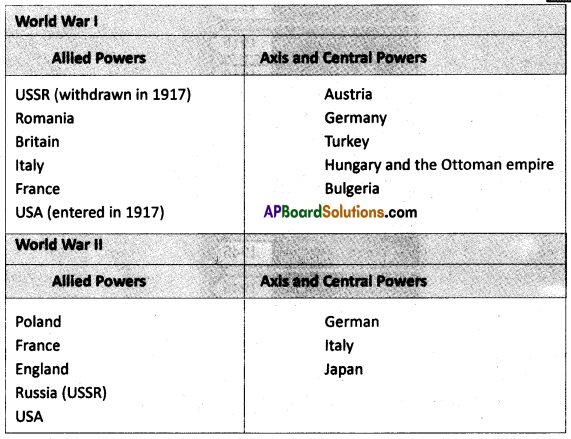
Question 3.
How did the idea of nation-states and nationalism influence desire for war during World Wars? (Or) How did Aggressive nationalism lead to World Wars?
(OR)
How did the idea of Nationalism lead to the World Wars?
Answer:
- The ideology of nationalism was a positive impulse.
- It was the foundation of modern nation-states.
- But later it became aggressive nationalism.
- It is used to create pride in oneself and hatred against neighbours.
- Fascists in Italy tried to build images of victories with it.
- Nazis of Germany mobilised Germans against other nations of Europe.
- These incidents led to World War.
- Thus, we can say the idea of nation-states and nationalism influenced the desire for war during World Wars.
![]()
Question 4.
Write a short note on various causes of two World Wars. Do you think any of these features are prevalent even today in countries around the world? How?
Answer:
- Two World Wars have various causes for their outbreak.
- They have some immediate provocation and some long-term causes.
- Among long-term causes aggressive nationalism, imperialism, secret alliances, militarism, the Treaty of Versailles, failure of League of Nations, German challenge to vengeful domination and fear of communism are there to be named.
- I don’t think any such features are prevalent in nations around the world now.
- But few developed nations are after the natural resource reserves of various other nations and damaging their sovereignty.
Question 5.
What are the different impacts of wars during the first half of 20th century? (OR)
“Second World War ended imperialism” justify it. (OR)
Describe the consequences of the World Wars.
Answer:
- There were different impacts of wars during the first half of 20th century.
- They showed the dangers of undemocratic governments.
- They strengthened the case for democratisation of power.
- They put an end to several empires like Austro-Hungarian, Russian, Ottoman and German empires.
- These empires were replaced by democracies.
- Colonies demanded self-government from colonialists.
- With the process of decolonization, hundreds of new countries were born.
- The League of Nations and the United Nations Organization were formed after the World War I & II.
- The map of eastern and central Europe was redrawn on the basis of nationality, economic viability and military security.
- These were the impacts of wars during the first half of the 20th century.
- After a long struggle for political right the right to vote – British women got these rights in 1918.
10th Class Social Studies 13th Lesson The World Between Wars 1900-1950 Part 1 InText Questions and Answers
10th Class Social Textbook Page No. 176 & 177
Question 1.
Look at some of the pictures given below, connect them with one or the other point mentioned and write a short note on each of them.
(a) Observe the picture of 1934 rally of Hitlers Nazi party at Nurnberg. Compare it with the political party rallies you have seen.
 Answer:
Answer:
- Political rallies conducted during the time of Hitler and that they are conducted now will definitely bear similarities.
- But the political fervour with which Nazis worked could not be seen now.
- Nazis under Hitler thought militarism and race superiority as their Agenda.
- Now political parties work for harmony and equality of all.
- Their approach may fit the period when they formed government.
- Now political rallies are conducted in peaceful manner moving towards democracy.
(b) Famous photograph of Polish immigrant Florence Owens during Depression by Dorothea Lange.
It depicts destitute pea pickers in California, March 1936. What would she be thinking?
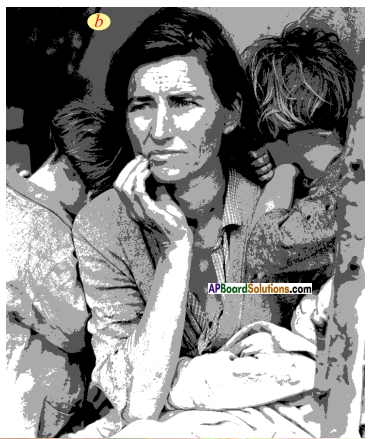 Answer:
Answer:
- Great Depression during 1929 – 30 ramshackle world economy.
- Many industries were closed and many more were taken away of their employment.
- Many were forced to take up the menial jobs like pea picking, etc.
- This picture depicts one such woman with her children in deep grief.
- She had migrated from Poland to California and was employed as pea picker.
- The picture depicts her sorrow of what happened and worries about the future.
![]()
(c) Atom Bomb in Nagasaki, also look at the picture at end of the chapter which shows the effect of this bomb.
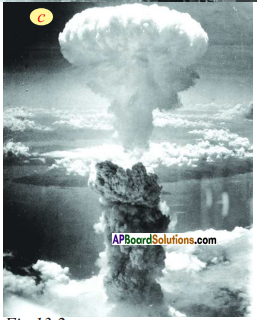 Answer:
Answer:
- Towards the end of the Second World War, America dropped two small atom bombs on Hiroshima and Nagasaki of Japan.
- They killed immediately between 1,50,000 to 2,46,000 people.
- The after-effects of these bombings, like leukaemia and cancer, lingered on for decades.
- From then, there is always the fear hanging around the world of another atom bomb dropping or a Third World War.
(d) A painting by Kustodiev in 1920 on The Bolshevik Revolution in Russia. What is the artist trying to say? Who the giant leader could be?
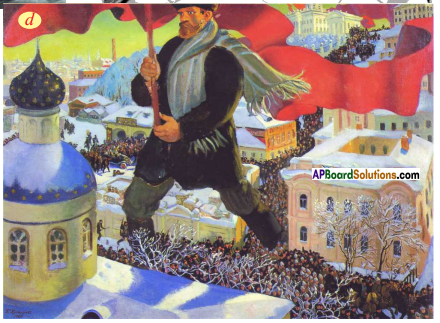 Answer:
Answer:
- Bolshevik Revolution in Russia came in 1917.
- People revolted against the Tsarist Regime.
- Bolshevik party promised people; food to starving people; land to peasants; power to Soviets and withdraw from World War.
- They confiscated all private factories, mills and industries and rationalised them.
- The portrait could be of Lenin.
(e) A cartoon in German with caption “Buy from the Jews, betray your people” 1929. What bias does it show?
 Answer:
Answer:
- The bias it shows is not to buy any product from Jews in Germany.
- That act of purchasing could prove them to be traitors of Germany.
- Germans under Hitler exhibited racial supremacy of Nordic.
- They developed wanton hatred towards Jews.
- In the later days, nearly 60 lakh Jews were killed by Nazis, followers of Hitler.
10th Class Social Textbook Page No. 179
Question 2.
Find out: How long did the India Pakistan war last in 1971? How many people were killed? (Or) “1971 a year of war and liberation.” Explain.
Answer:
- Actually East Pakistan (later Bangladesh) people were fighting for liberation from Pakistan from March 1971.
- India joined the war supporting East Pakistan on 3rd December 1971 and ended on 16the December 1971.
- The war lasted for only 13 days. It is considered to be one of the shortest wars in the history.
- 3,843 Indian soldiers lost their lives whereas 9000 Pakistani soldiers were killed.
- 9,851 Indians and 4,350 Pakistani’s were wounded.
- 97,368 Pakistani’s were taken as prisoners of war.
10th Class Social Textbook Page No. 181
Question 3.
In what ways do you think industrialisation has created the conditions for modern wars?
Answer:
- Industrial capital developed in European countries like Britain, Germany and the USA.
- They needed markets for their products and access to raw materials.
- Accumulated capital in Banks was also to be put in safe investment opportunities in colonies. This led to imperialism.
- Governments of these countries acted in interests of capitalists to increase their colonies.
- New industrial powers like Germany, Italy and Japan competed with them.
- This created much stress and often led to wars.
![]()
Question 4.
Do you think the love for one’s country among people of different countries leads to wars?
Answer:
- Love for one’s country is a positive impulse.
- If one lives among people of different countries also, love for his country will not harm.
- But love for one’s country, at times is associated with hatred against neighbours.
- Then it would not be a positive impulse.
- It will make the living of one even in his own country miserable.
- He cannot live comfortably with such kind of people.
- This type of aggressive nationalism, at times disturbs the peaceful co-existence and leads to wars.
Question 5.
If one country takes an aggressive stance against another country, should the other country also respond aggressively? Can there be other ways of handling the problem?
Answer:
- If one country takes an aggressive stance against another country, the other country should not respond aggressively.
- There can be other ways of handling this problem.
- If both the countries are members of any institution of world governance like UNO, then going there is the better option.
- UNO tries to sort out the problem and comes up with just solution.
- If any of the country does not happen to be a member of UNO, then arbitration is the best policy.
- Both of them should have an agreeable third party country to mediate and both of them should abide by its solution.
Question 6.
Do you find the presence of aggressive nationalism, imperialism, power blocks and militarism around us today too? Give examples and discuss in the class.
Answer:
- We may find traces of such things now.
- In perfect sense, we may not find aggressive nationalism, imperialism, power blocks and militarism around us today.
- We can see countries like China, which are denying countries like Tibet of their sovereignty.
- We can see countries like the USA which are interfering in affairs of other countries like Iran, Afghanistan, Vietnam, Libya, etc.
- We find some countries interfering in the affairs of other countries with a view to over power the natural resources present there.
![]()
Question 7.
Find out about some of the wars fought during the last ten years and see to what extent these four factors caused them.
Answer:
- The four factors were aggressive nationalism, imperialism, power blocks and militarism.
- The USA was involved in most of the wars that were fought during the last ten years.
- Iraq War: The USA attacked Iraq blaming the regime of Saddam Hussein in 2003. From then till 2011 American forces were there in Iraq. They tried Saddam and executed him.
- War in North West Pakistan: Taliban, a militant Islam Group formed for separate nation from Pakistan and fighting with it from 2004. The USA sent troops to quell the agitation. But it Is not decimated yet.
- Somalia War (2006 – 2009): There were ethnic differences led to large scale fighting In Eastern Africa in countries like Somalia, Ethiopia and Eritria, etc.
- An Islamic militant outfit Al-Queida (under Osama Bin Laden once) intruded Into Yemen in 2010.
- In 2007 there occurred Transahara War in Northern African countries Morocco, Tunisia and Mauritania, etc.
- Most of these wars are of militant nature.
10th Class Social Textbook Page No. 183
Question 8.
Some organs of the League of Nations like the International Labour Organisation (ILO) and World Health Organisation (WHO) continue to function to this day. Find out about their activities and prepare a project report on one such organ.
Answer:
Some organs of the League of Nations are functioning till date. A few of them are ILO, WHO and IG, etc. World Health Organisation (WHO) played an Important role in providing good healthy conditions to most of the third world countries. Dreadful diseases like cholera, smallpox, polio, etc., were checked. In recent years WHO is fighting against AIDS and heart diseases. In Argentina, Brazil and Uruguay, the WHO suggested measures and advised to start an international school for infant and child welfare at buenos. Aires, and a public health school at Rio-de-Janerio, the capital of Brazil.
(OR)
Some activities of U.N.O:
- Skills development, job creation and elimination of work force inequalities.
- Ensuring equal access of women to the labour market and social security.
- Integration of youth through education, etc.
Question 9.
Do you think the Second World War could have been avoided if the victorious powers had been more considerate towards Germany in 1919?
Answer:
- The peace treaty after 1st World War imposed inhumane and humiliating terms on Germany.
- Germans thought that the Treaty of Versailles was a diktat imposed on them.
- Germans were asked to return colonies like Alsace and Lorraine.
- Germany was asked to pull down its army strength to 1 lakh from 9 lakhs.
- It was asked not to have submarines and restrictions were imposed on its naval strength.
- This humiliating terms of Treaty of Versailles led to the rise of Hitler.
- He recovered all the territories lost due to Treaty of Versailles.
- Hence we can conclude that the Second World War could have been avoided if the victorious powers had been more considerate towards Germany.
![]()
(OR)
It is right upto some extent. But the considerations might not be accepted by the dictator Hitler. Pacifying nature should be in both the sides.
I think the considerations could have postponed the World War – II.


 Many people have argued for localisation of food production rather than food travelling long distances. How is localisation of food connected to the environment ? Find out more about the localisation movement in food and organise a discussion and debate in the classroom.
Many people have argued for localisation of food production rather than food travelling long distances. How is localisation of food connected to the environment ? Find out more about the localisation movement in food and organise a discussion and debate in the classroom.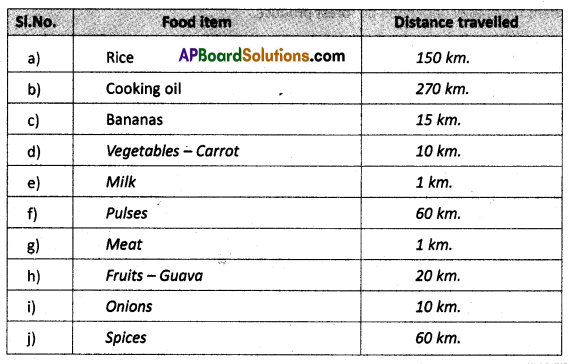
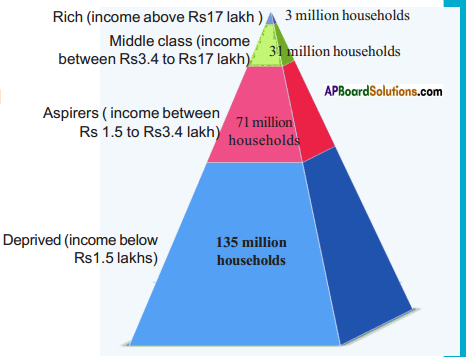

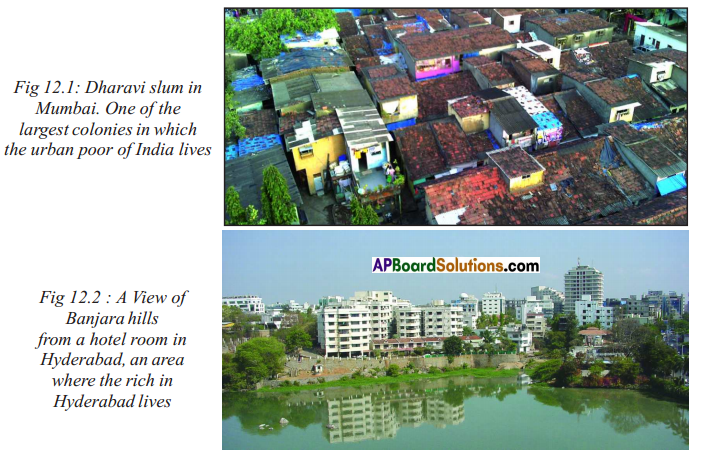 Answer:
Answer:

 Write your caption in the context of the environment.
Write your caption in the context of the environment. Answer:
Answer: Write your caption in the context of development.
Write your caption in the context of development.

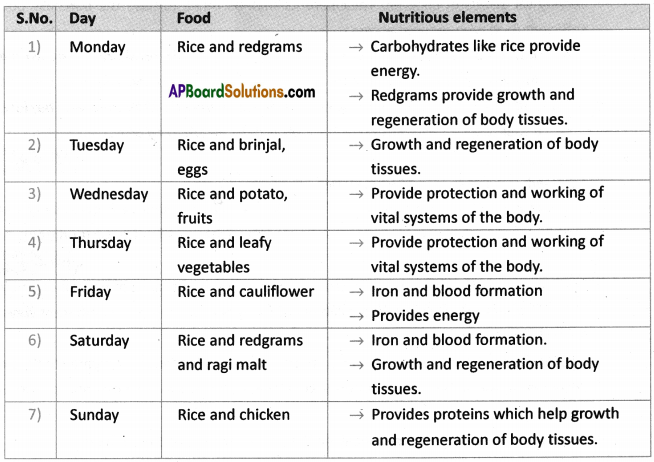
 Answer:
Answer:
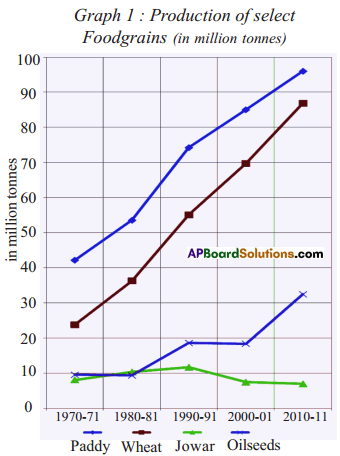 The food grains production has grown over the period 1970-71 to ——–. Paddy production increased from about 40 million tonnes in 1970-71 to about ——– million tonnes in 2010-11. Another important food crop that witnessed rapid increase in production during this 40 years period was ——–. Compared to paddy and wheat the production of ——– did not increase during 1970-2011. This could be due to ——–.
The food grains production has grown over the period 1970-71 to ——–. Paddy production increased from about 40 million tonnes in 1970-71 to about ——– million tonnes in 2010-11. Another important food crop that witnessed rapid increase in production during this 40 years period was ——–. Compared to paddy and wheat the production of ——– did not increase during 1970-2011. This could be due to ——–.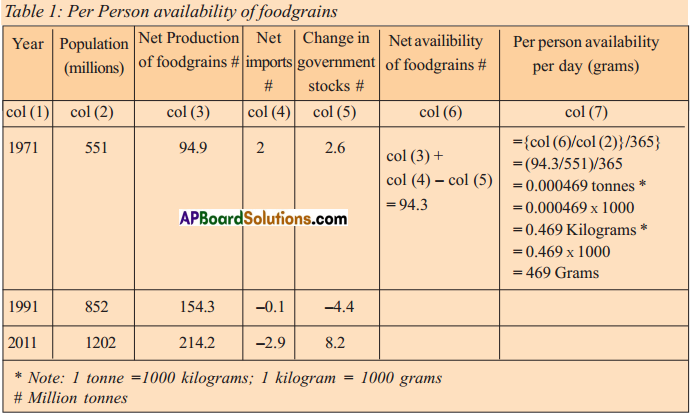 Answer:
Answer:
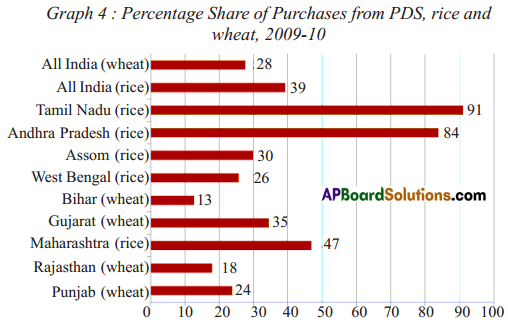
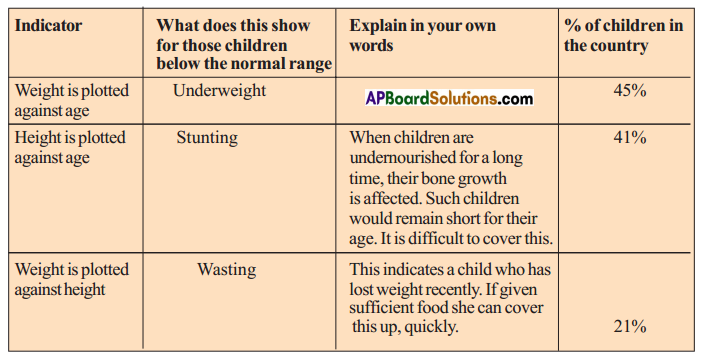
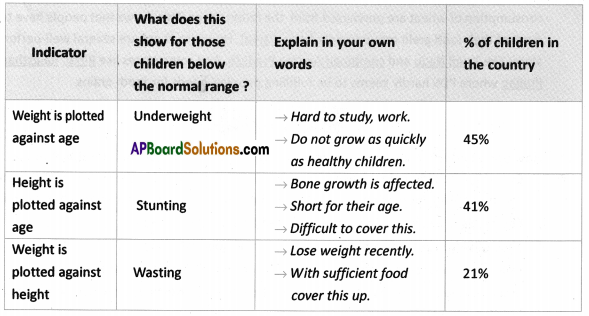 When weight is plotted against age nearly 45% of children in the country are under weight. It means that they cannot study, work or perform physical activities. They do not grow as quickly as healthy children. Their immune system is weakened. When height is plotted against age 41% of children not up to the height they have to be. It seems their growth is affected and short for their age. They are difficult to cover this. When weight is plotted against height 21% children are not with weight they are supposed to be. With sufficient food they can cover this up.
When weight is plotted against age nearly 45% of children in the country are under weight. It means that they cannot study, work or perform physical activities. They do not grow as quickly as healthy children. Their immune system is weakened. When height is plotted against age 41% of children not up to the height they have to be. It seems their growth is affected and short for their age. They are difficult to cover this. When weight is plotted against height 21% children are not with weight they are supposed to be. With sufficient food they can cover this up.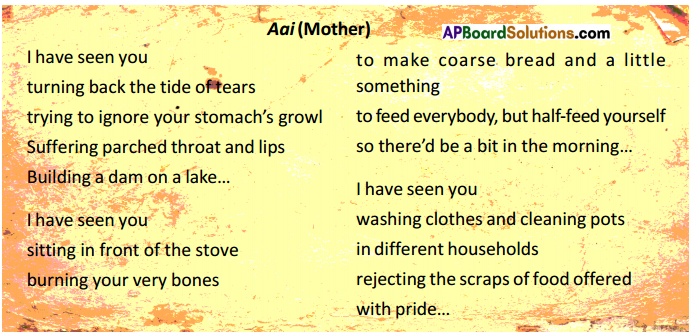




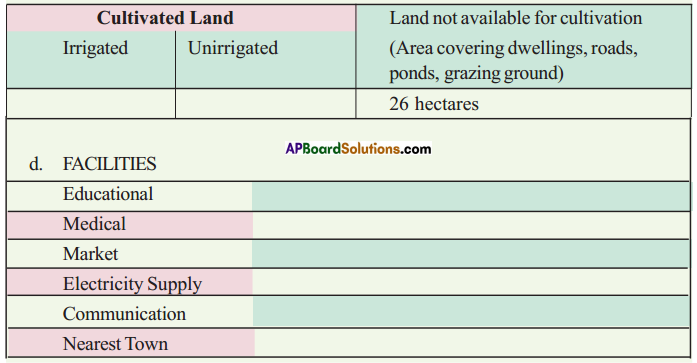

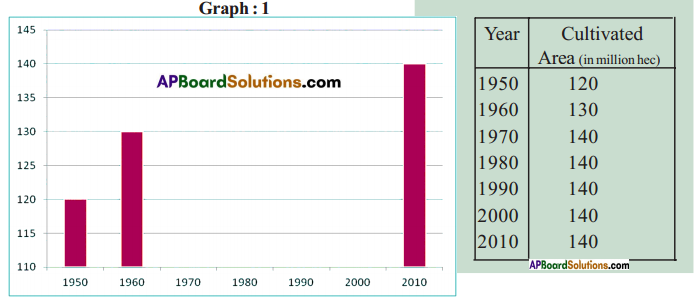
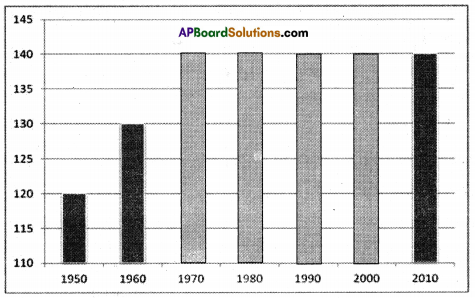
 Answer:
Answer:
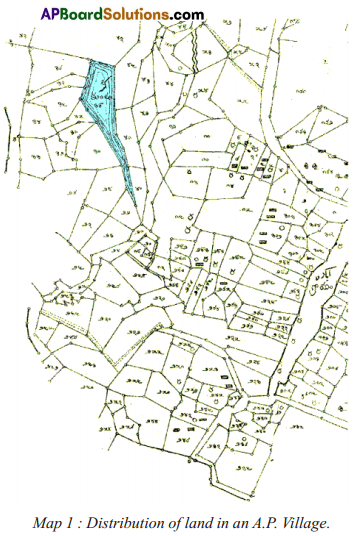 Answer:
Answer: What do the arrows indicate? Would you agree that the distribution of cultivated land is unequal in India? Explain. (OR)
What do the arrows indicate? Would you agree that the distribution of cultivated land is unequal in India? Explain. (OR)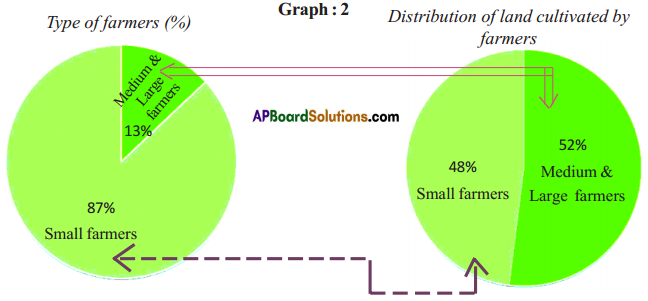 Answer:
Answer: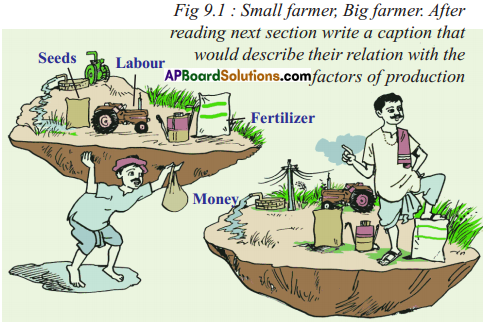 Answer:
Answer: Answer:
Answer: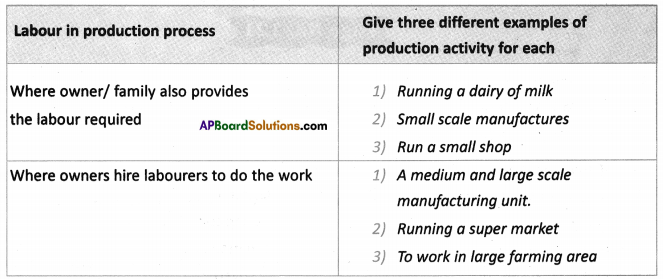
 Answer:
Answer: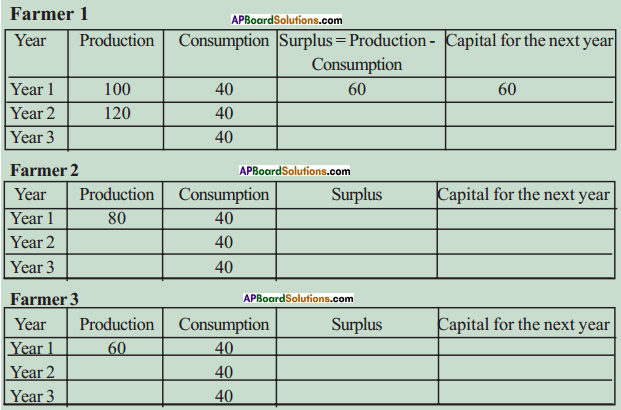 Answer:
Answer: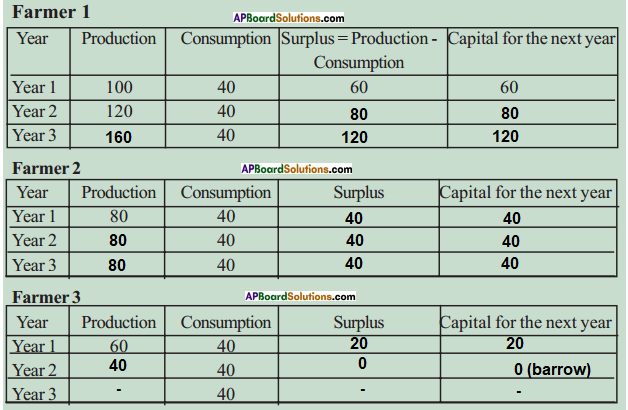

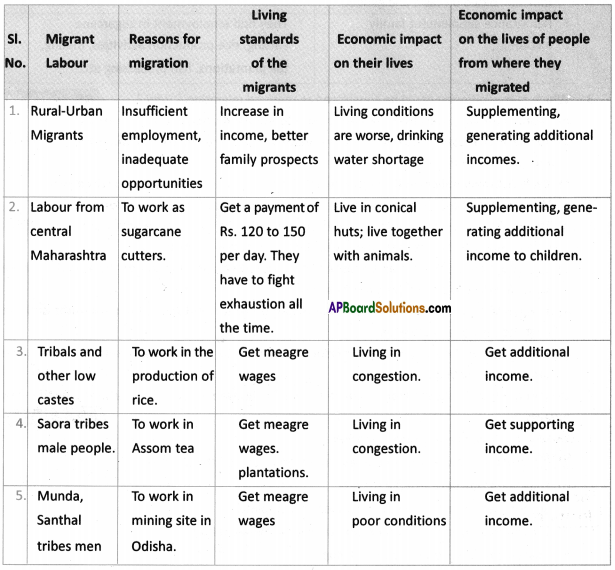

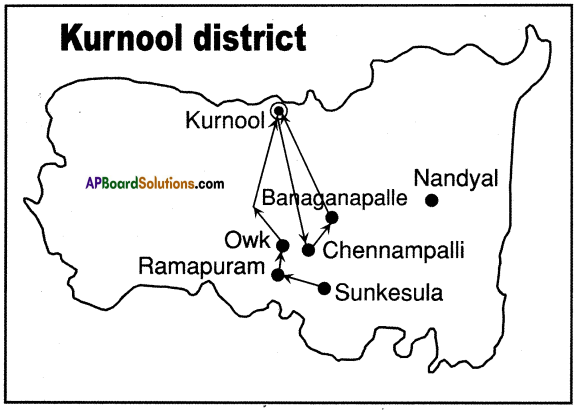
 Answer:
Answer: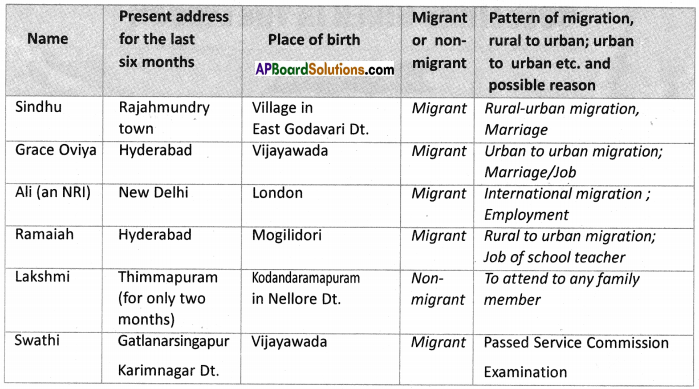
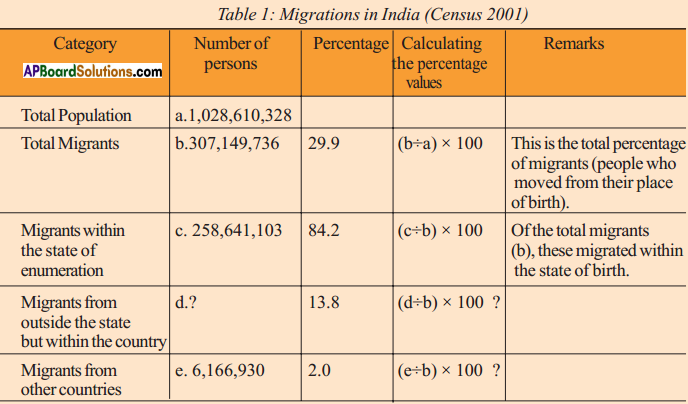 Answer:
Answer:
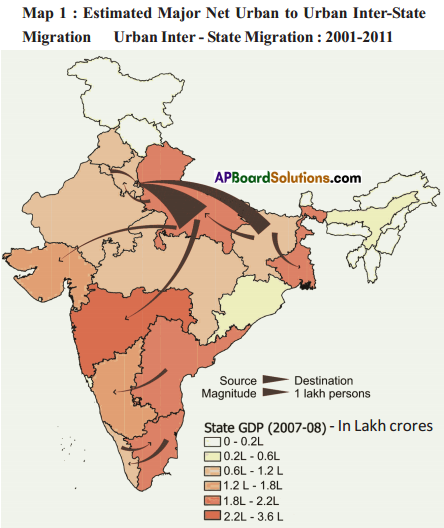 Answer:
Answer: Answer:
Answer: Answer:
Answer: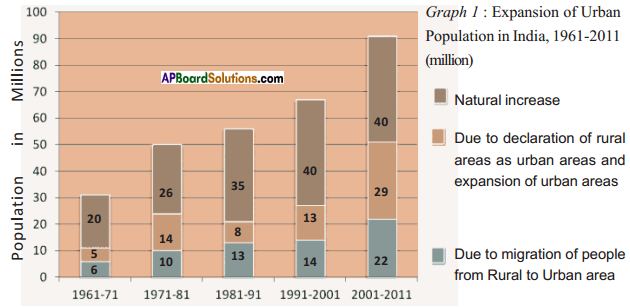 Answer:
Answer:


 What do you think of migrants across the border?
What do you think of migrants across the border?


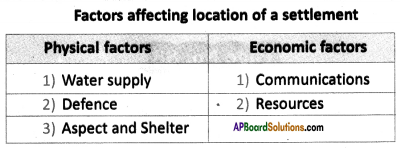
 Answer:
Answer:
 Observations :
Observations :
 Answer:
Answer: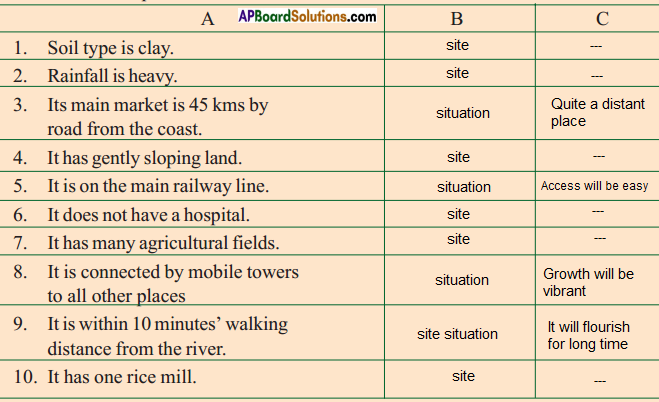
 Answer:
Answer: Repeat this kind of study for any other country of your choice.
Repeat this kind of study for any other country of your choice.

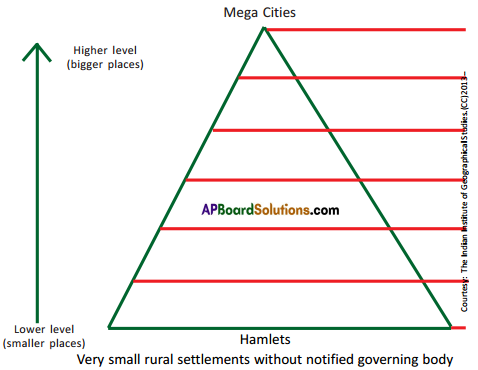


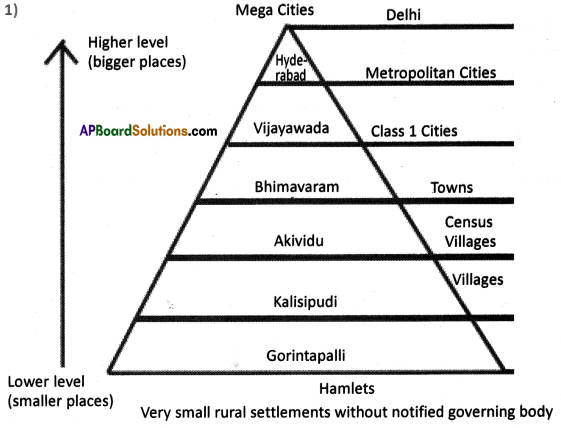
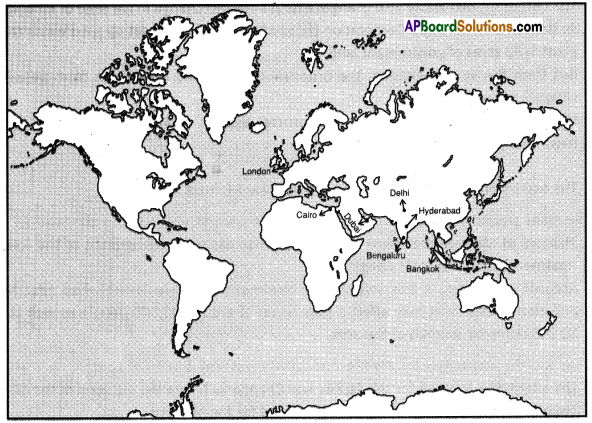
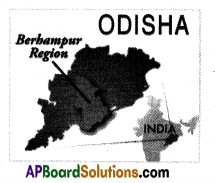

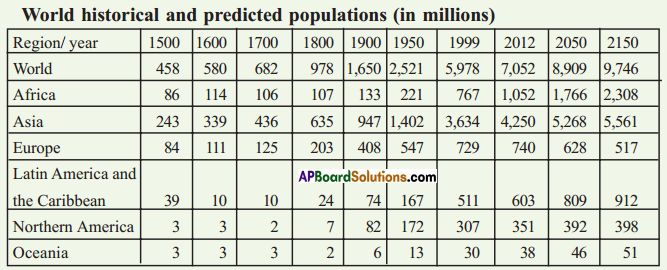 (a) Identify roughly how many centuries it took for the world population to double for the first time.
(a) Identify roughly how many centuries it took for the world population to double for the first time.


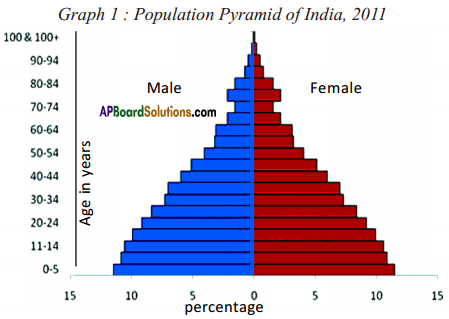 (a) Which country’s population is likely to grow ?
(a) Which country’s population is likely to grow ?
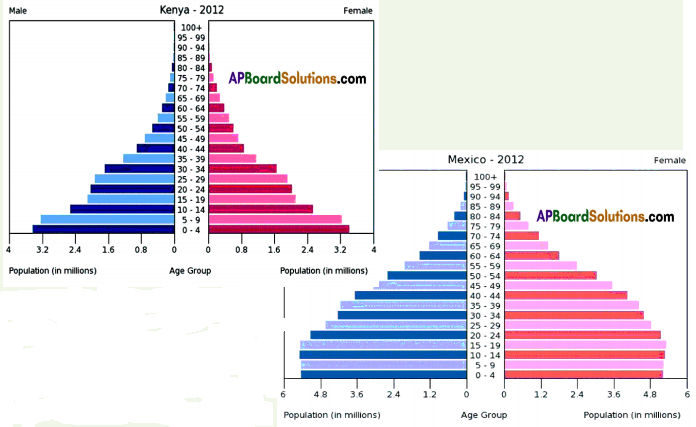 Answer:
Answer:
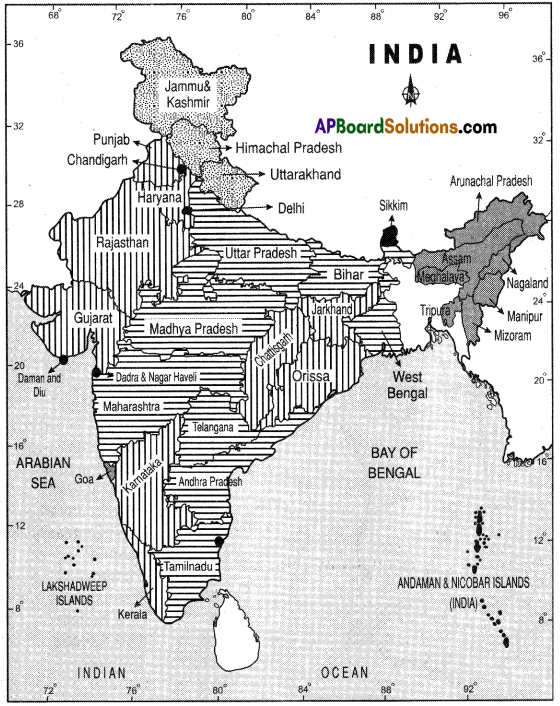
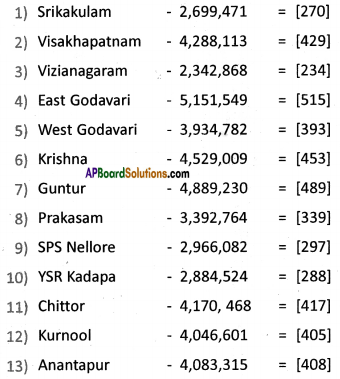
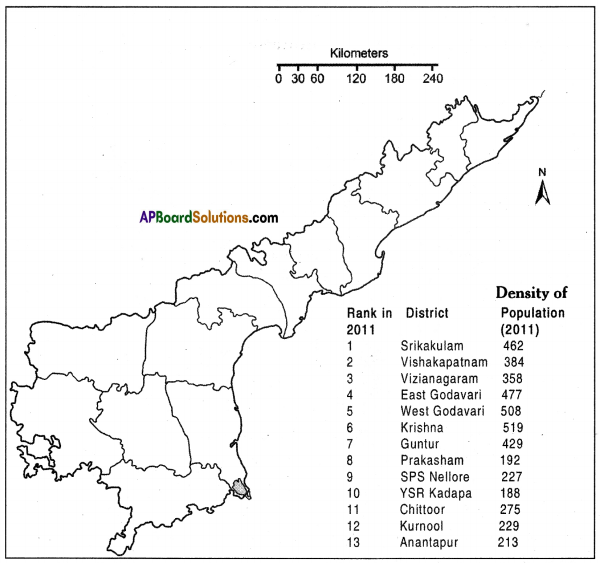


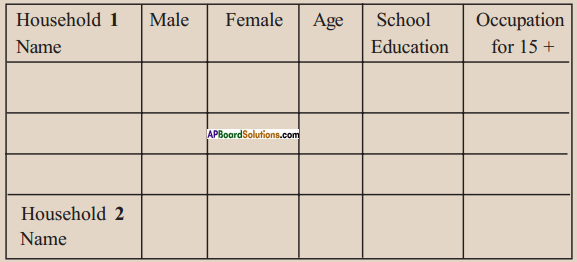






 (a) From the age pyramid given above, identify a rough estimate of the percentage of children in the population.
(a) From the age pyramid given above, identify a rough estimate of the percentage of children in the population.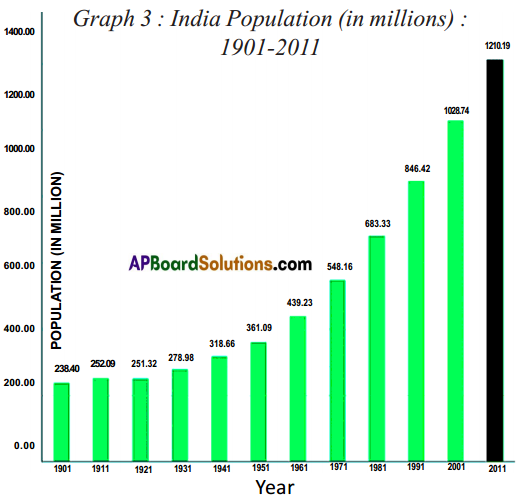
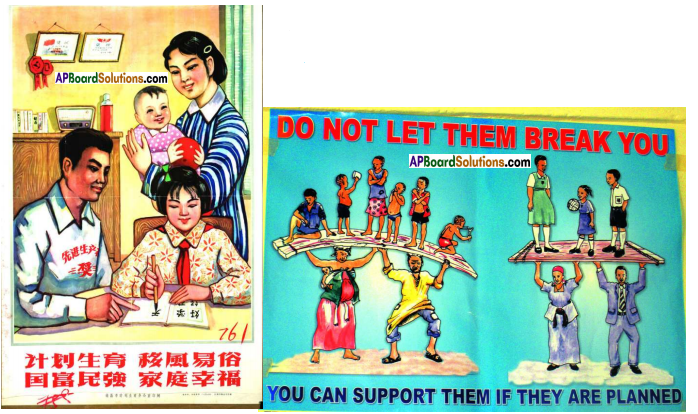 Answer:
Answer:
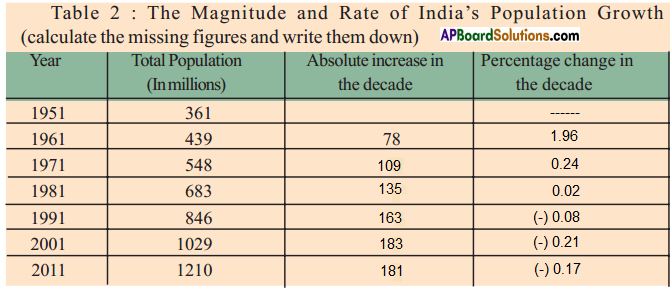
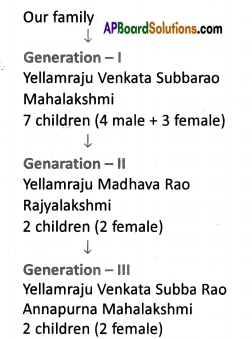 I observe that family planning was planned in the second generation itself. So the growth rate is decreasing at present.
I observe that family planning was planned in the second generation itself. So the growth rate is decreasing at present.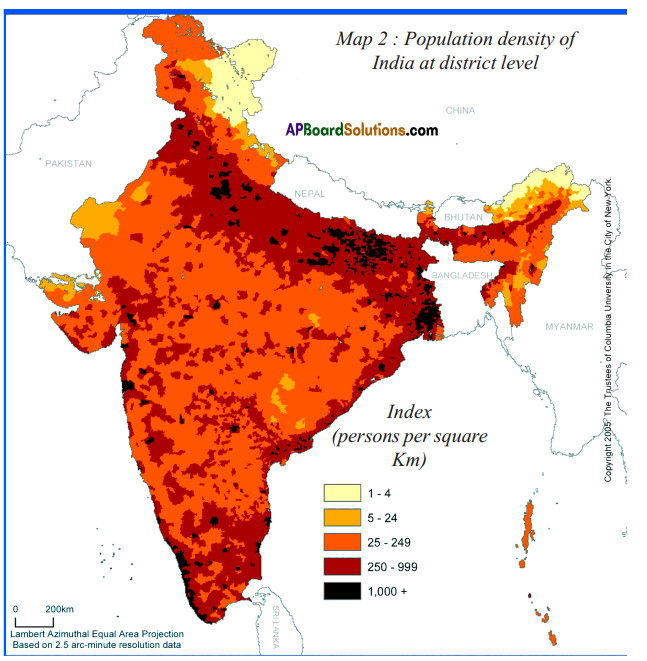 Answer:
Answer: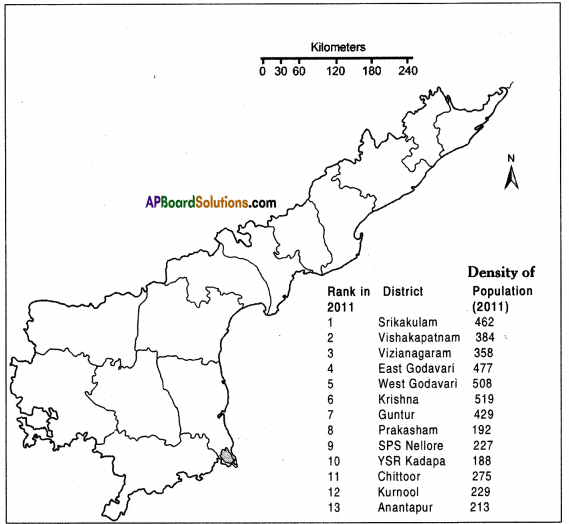 Here are the data for the population density of Andhra Pradesh – 2011. On the above blank district map of AP plot them in ranges.
Here are the data for the population density of Andhra Pradesh – 2011. On the above blank district map of AP plot them in ranges.
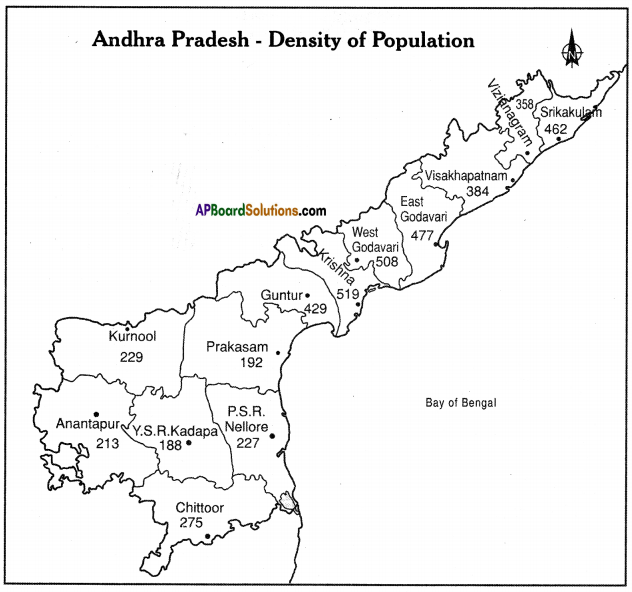
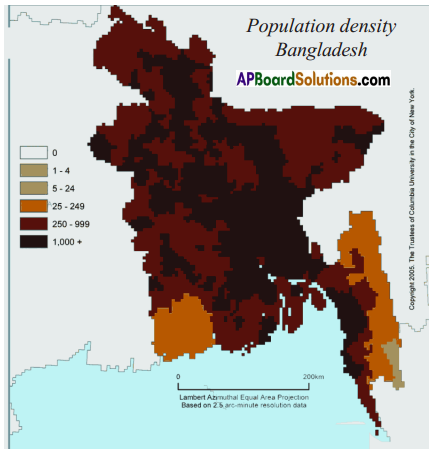
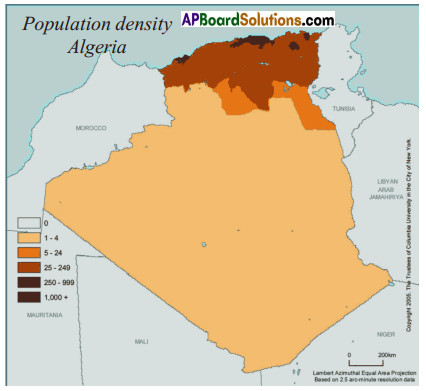
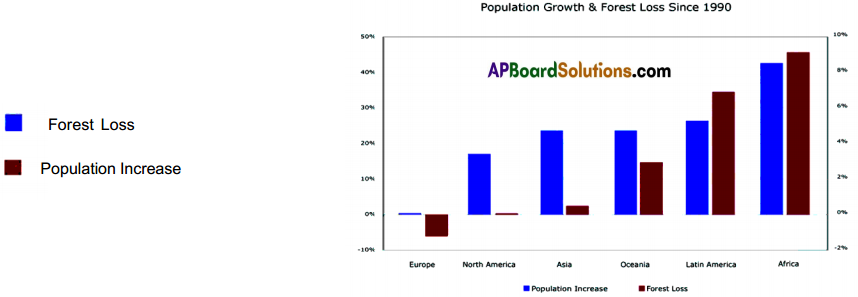

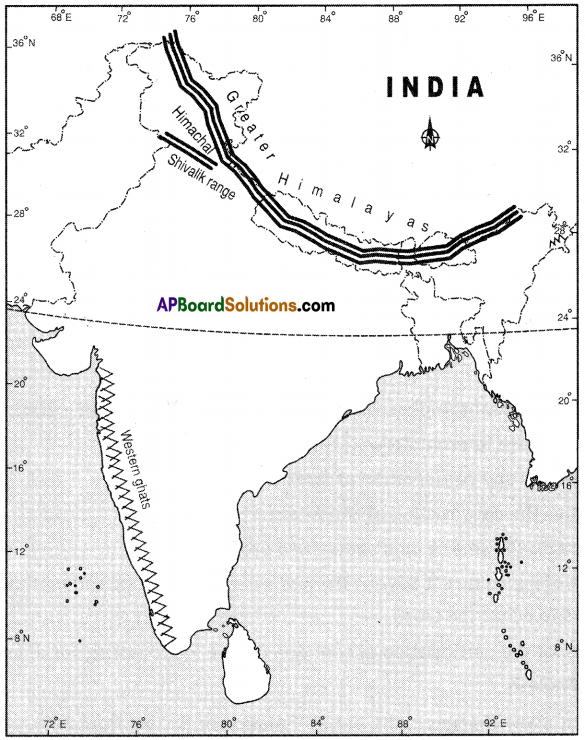
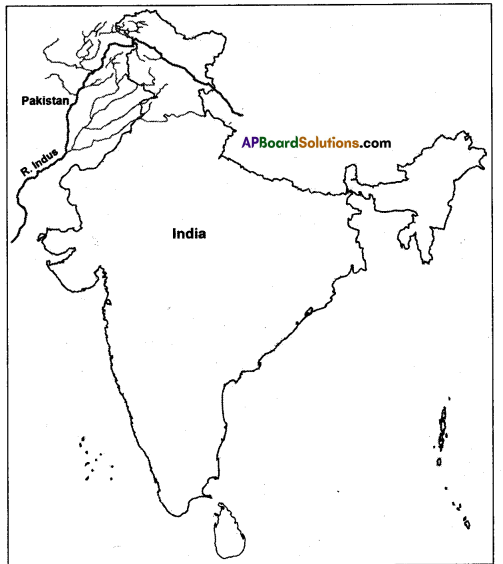

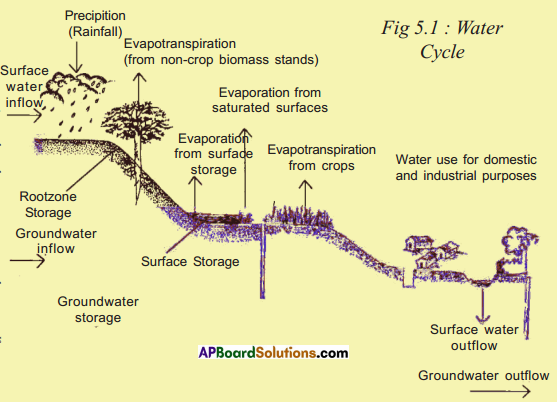
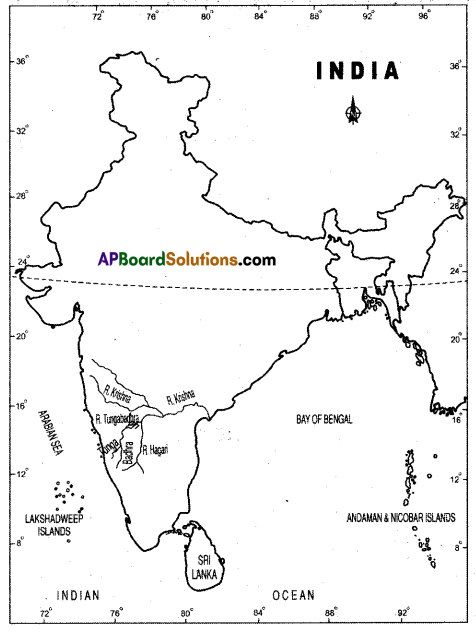


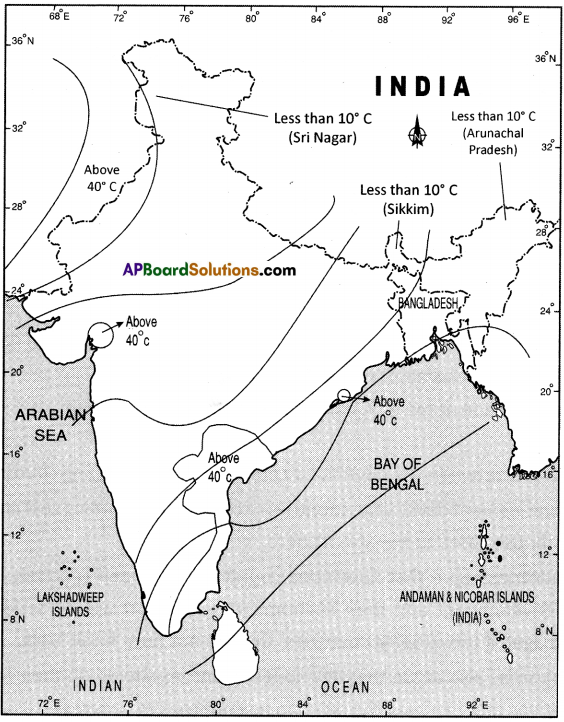
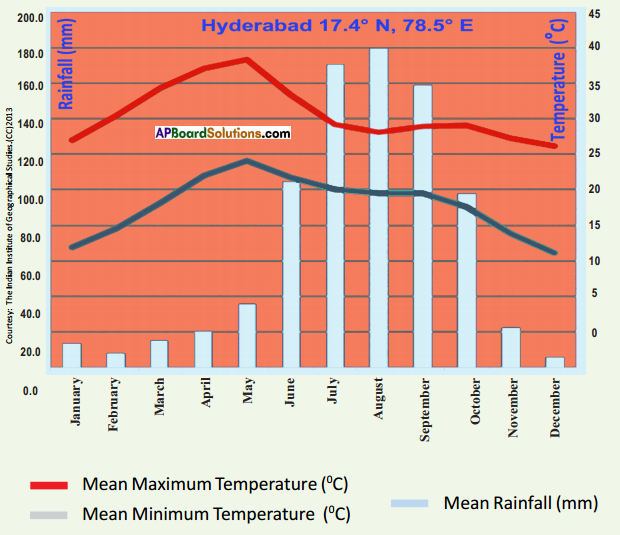
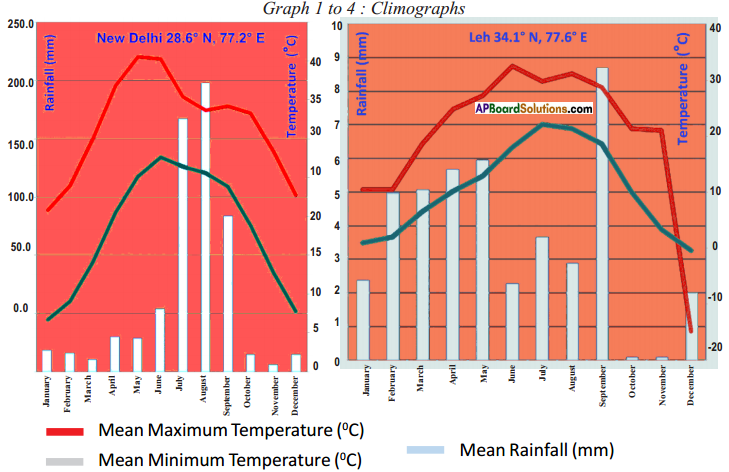

 Answer:
Answer: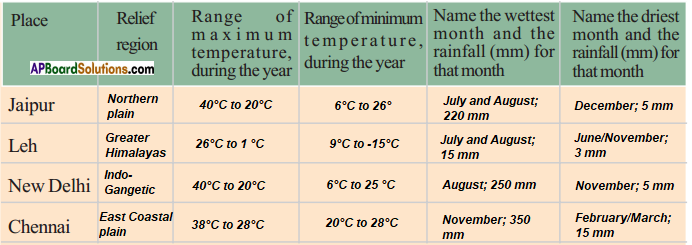
 Sun angles and their impact.
Sun angles and their impact.

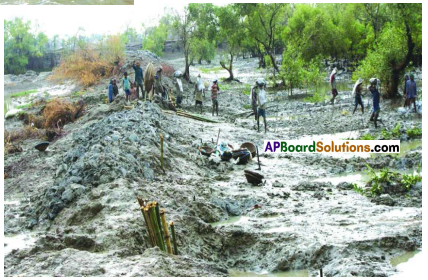


 Answer:
Answer: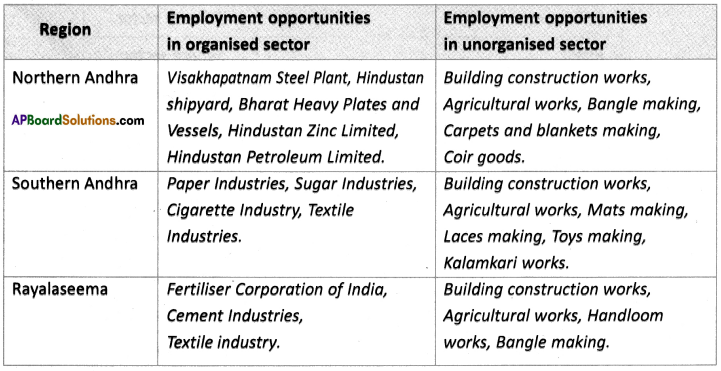

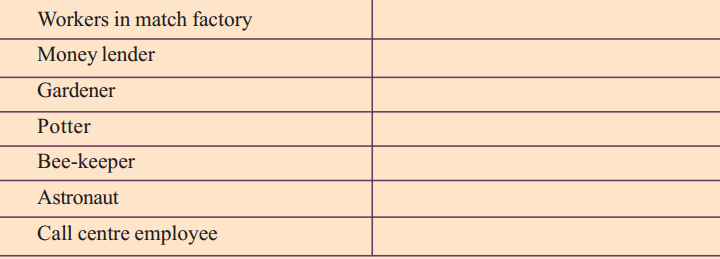 Answer:
Answer: (i) What are the major changes that you observe from the above table?
(i) What are the major changes that you observe from the above table?
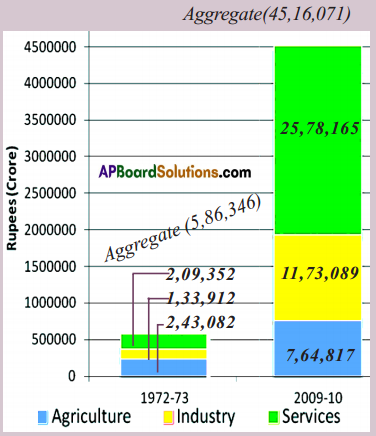 (a) Which was the largest producing sector in 1972 – 73 ?
(a) Which was the largest producing sector in 1972 – 73 ? Discuss : To find out the total value of goods produced should we add them up?
Discuss : To find out the total value of goods produced should we add them up? Answer:
Answer:
 Discuss : Why do both methods give the same result ?
Discuss : Why do both methods give the same result ?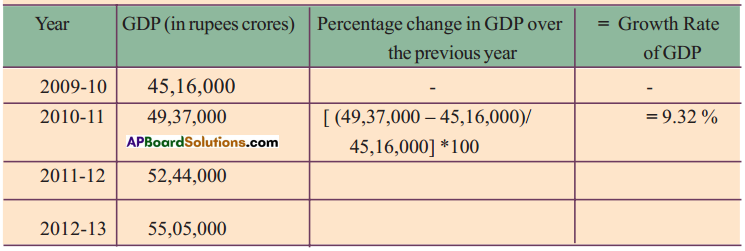 Answer:
Answer: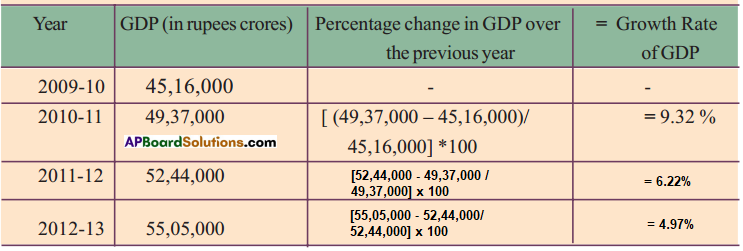
 Read the above table and fill in the blanks.
Read the above table and fill in the blanks.